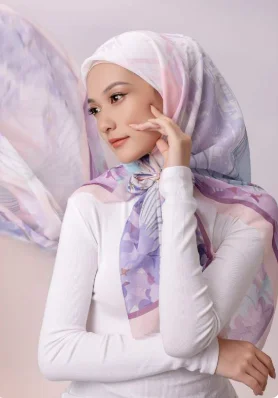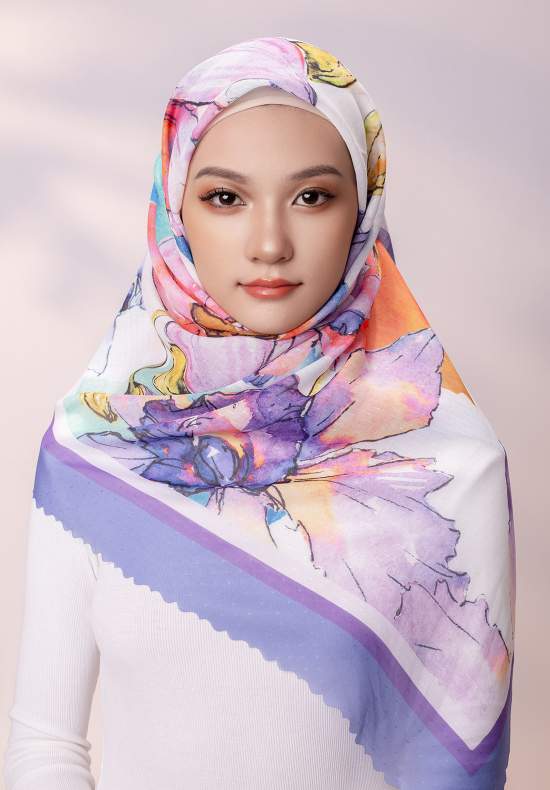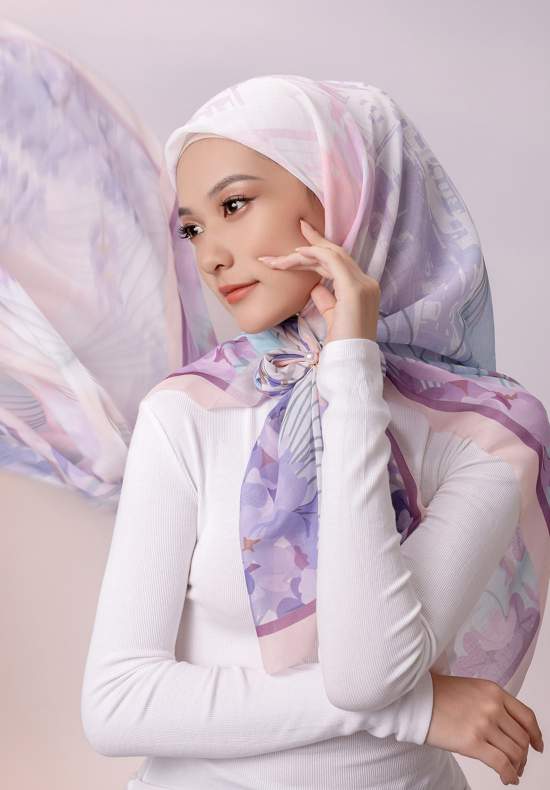What is the difference between cambric and voile?
What is the difference between cambric and cotton voile?
In the textile industry, choosing the right fabric is essential to making high-quality finished products. Especially for products like custom scarves, the fabric not only determines the texture of the final product, but also affects its overall appearance and functionality. Among the many light and thin fabrics, cambric and cotton voile are two commonly mentioned fabric types. Although both are known for their lightness and softness, there are significant differences between them. This article will explore the differences between cambric and voile from multiple aspects such as material, manufacturing process, use, breathability, and market performance to help readers better understand these two fabrics.
1. Differences in material composition
1.1 Cambric
Cambric is a plain weave textile originally made of cotton or linen and originated in France. Modern cambric is usually made of pure cotton, occasionally mixed with some chemical fiber materials. It is a very light and tight fabric with a silky surface and delicate texture.
Data support: According to the textile industry report, more than 85% of the global kabrik production uses cotton as the main material, especially in the high-end clothing and home textile markets, the demand for cotton kabrik maintains an average annual growth rate of about 3.5%.
1.2 Voile
Voile is also a light fabric, but unlike kabrik, it is mostly made of cotton, silk or artificial fibers (such as polyester and nylon). Its weaving structure is relatively loose, so it has high air permeability and transparency. Voile is used as a decorative fabric in many cases, especially in applications that require light and soft effects.
Data support: According to the research data of the textile market, the production materials of voile are diversified, and polyester and cotton are the two most common materials. In 2023, the global market share of polyester voile is as high as 45%, showing its important position in the modern textile industry.
2. Different weaving methods
2.1 Weaving method of kabrik
Kabrik uses plain weave, and the yarns are closely arranged, giving it a high-density texture. This high-density weaving makes Kabrick not only have good covering power, but also very tough even when it is light and thin. This fabric is commonly used in making shirts, handkerchiefs and home textile products because of its durability and soft feel.
2.2 How tulle is weaved
In contrast, tulle uses a looser plain or twill weave with loose yarn arrangement, so the fabric has higher transparency and breathability. Tulle is usually used to make products that require light and flowing effects, such as curtains, wedding dresses and summer clothing. This structure makes it look very light, but it also reduces durability.
Data comparison: According to relevant experimental data, the yarn density of Kabrick is usually 50-80, while the density of tulle is 20-40, which directly leads to the difference in durability and visual effects between the two.
3. Differences in appearance and feel
3.1 The appearance and feel of Kabrick
Kabrick is known for its smooth and tight surface. Due to its dense weaving, the fabric surface does not have too much looseness, and the feel is firmer and more delicate. Especially after special treatment, Kabrick cloth can present a silky luster, so it is often used to make formal clothing, such as shirts and business suits.
3.2 The appearance and feel of tulle
Tulle has high transparency and elegance, and its feel is softer and lighter than Kabrick cloth. Due to the looseness of the weaving, tulle is more likely to produce soft folds, which is particularly suitable for highly decorative occasions, such as gauze curtains and romantic wedding costumes.
Market research: In 2022, tulle fabrics accounted for 68% and 45% of the wedding dress and curtain markets respectively. Its light, breathable and beautiful characteristics have made it widely recognized in these applications.
IV. Differences in actual use
4.1 The main use of Kabrick cloth
Due to its high density, durability and good feel, Kabrick cloth is mainly used to make high-quality shirts, sheets, handkerchiefs and some formal household items. It not only looks smooth and professional, but also maintains a good shape in daily use and is not easy to wrinkle. The wear resistance of this fabric also makes it suitable for long-term wear.
4.2 Main uses of tulle
Tulle is mainly used for summer dresses, curtains, tablecloths and wedding decorations due to its lightness and decorativeness. Due to its high breathability and transparency, it is particularly suitable for occasions where light needs to pass through. Tulle is very popular in the wedding market because it can create a romantic and dreamy effect.
Data support: According to the analysis of the global wedding dress market, tulle wedding dresses account for about 55%, and its soft and flowing characteristics meet the special needs of wedding occasions. In addition, the sales volume of tulle curtains accounts for more than 30% of the global curtain market, especially in summer when the demand is strong.
V. Price and market positioning
5.1 Price of Kabrick cloth
Due to the complex production process of Kabrick cloth, especially the manufacturing process of high-density cotton fabrics, it is necessary to finely control the weaving density and the quality of the yarn. Therefore, the price of Kabrick cloth is relatively high, especially when used for high-end clothing, the price per meter may be between US$30 and US$100.
5.2 Price of tulle
The production cost of tulle is relatively low, especially when using man-made fibers, the price is more affordable. The price of polyester tulle commonly seen in the market is between $5 and $15 per meter, while the price of pure cotton or silk tulle is slightly higher, about $20 to $50. In general, tulle fabrics are more suitable for the large-scale production of decorative and lightweight clothing markets.
VI. Summary
In summary, although both cabric and tulle are light fabrics, they have significant differences in material, weaving method, appearance, feel and use. Cabric is more suitable for products that pursue durability, texture and sophistication, such as high-end clothing and home textiles; while tulle is mainly light, breathable and decorative, and is widely used in weddings, curtains and other occasions that require beautiful effects.
When choosing fabrics, understanding their characteristics can help us make more informed decisions. If you need a high-density, durable and smooth-looking fabric, cabric is undoubtedly the best choice; and if you want to create a light and flowing visual effect, tulle will be a more suitable choice.




